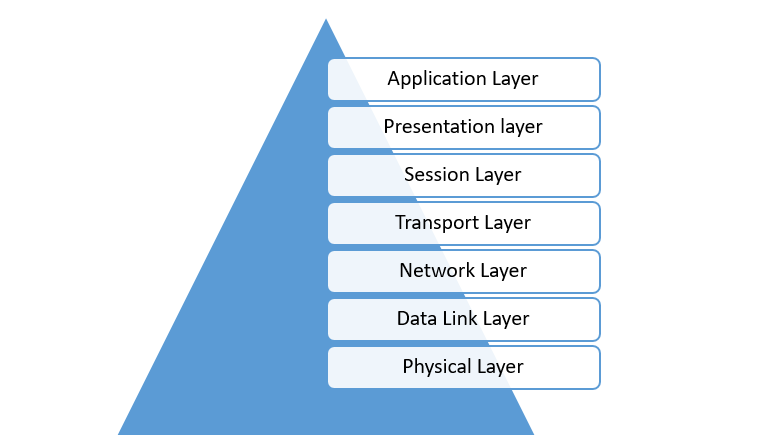OSI Model
OSI Model
It stands for Open System Interconnection. Initially there was
no standard protocols but later ISO (International Standards
Organization) has setup some common protocols to standardize
network communication.
OSI has been divided into seven layers.

Physical Layer
This is the first layer in OSI model where data arrives in raw
format (in bits). It is responsible for communication over the
network. From here, we can define type of communication like
Simplex (One way communication only), Half Duplex (Two way
communication but send or receive one at a time) and Full
Duplex (Two way, send and receive can work simultaneously).
There are devices which works as Physical Layer. These are
Hubs, Network Interface Cards, and Repeaters.
Data Link Layer
Here data received over Physical Layer converted into frames.
Some headers has been added to data to make it frames. This is
responsible for Local Area Network communication. It basically
facilitates the data which has been transferred in the same
network. It is also responsible for physical address of devices
which is basically MAC (Media Access Control) address. It also
manages flow control.
Ethernet, frame-relay, token ring protocols are managed at this
layer.
Bridges and Layer2 switches are the devices at Data Link Layer.
Network Layer
The frames which was present at Data Link Layer are transformed
into packets for further processing. This is done by adding
some more headers. It is also responsible for Logical IP
addressing of the devices where you can defined the Logical IP
address to the devices. This can be done in form of IPv4 or
IPv6. You can understand the difference between IP addresses
and MAC addresses. MAC addressed has been bind to devices
while IP addresses can be changed for one device. You can
assign the IP address of one device to other by removing from
old one.
IPv4, IPv6, IPsec, ICMP are the protocols at this level. And
devices are Layer3 Switches, Routers, firewall etc.
Transport Layer
Now what will happened to the packets transferred from Network
Layer, Some more headers will be added and it will become
segments. It is very important layer where TCP and UDP protocol
come into play. This play a very important role in process
separation at which is done via different port numbers.
Session Layer
This play a role in managing or establishing connection between
the sender and receiver. It also synchronize the sessions as
well. It also put some checkpoints if connection breaks so can
be resumed from there.
Protocols are NetBIOS, NFS, SOCKS, etc.
Presentation Layer
This is responsible for formatting the data into readable
format. It basically prepares data for application layer.
Like JPEG, MPEG etc. It also does compression and encryption
so that data can be changed to well-known format.
Application Layer
The application layer is basically used by end user. It
provides the interface between the application and underlying
network so that send and receive of can be done to present
well-known data to user.
The application layer provides an interface for application
only. It provides protocols and services for communicating
between application and network.
Protocols are DNS, HTTP, FTP, etc.
Related
Loading repositories and latest updates...
Recent Posts
Recent Blog
- Tanisha Yirawala on Difference between Connection-oriented protocols vs Connectionless Protocols
- OlpWriple on Installation of Linux Operating System (Red Hat 8) in VMWare Workstation
- Berenice Saenz on Difference between Connection-oriented protocols vs Connectionless Protocols
- Chloe Adams on Difference between Connection-oriented protocols vs Connectionless Protocols
- Taylor Swift on Difference between Connection-oriented protocols vs Connectionless Protocols
Interview Q&A
- May 2025
- March 2025
- November 2024
- October 2024
- September 2024
- July 2024
- June 2024
- May 2024
- March 2024
- February 2024
- January 2024
- November 2023
- October 2023
- September 2023
- August 2023
- July 2023
- April 2023
- March 2023
- January 2023
- December 2022
- November 2022
- October 2022
- September 2022
- August 2022
- May 2022
- April 2022
- March 2022
- February 2022
- January 2022
- November 2021
- September 2021
- August 2021
- July 2021
- June 2021
 Visit My GitHub VARELITE
Visit My GitHub VARELITE
One thought on “OSI Model”